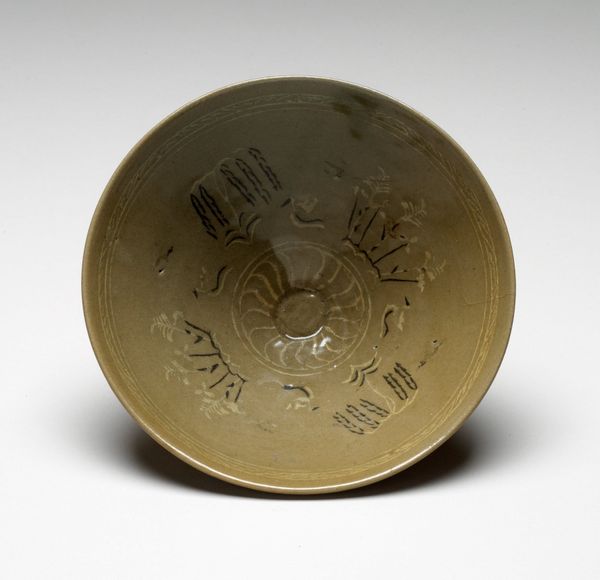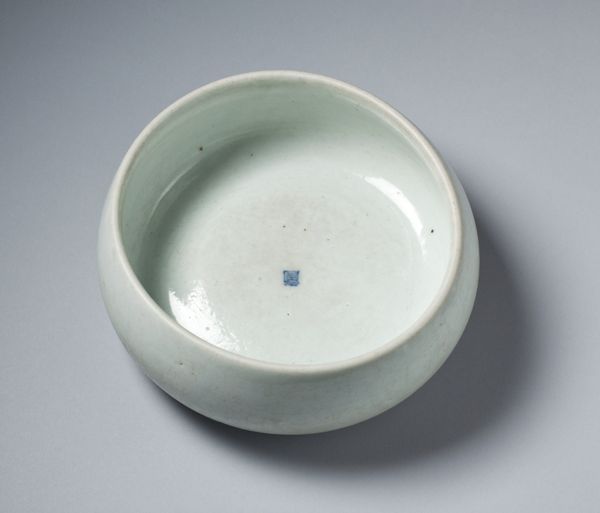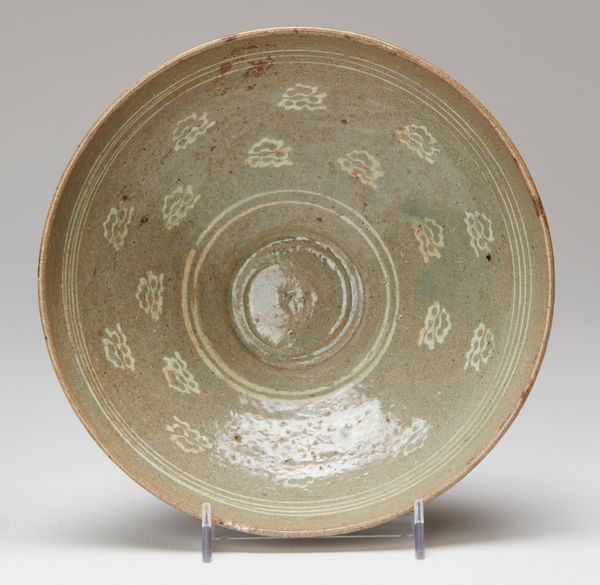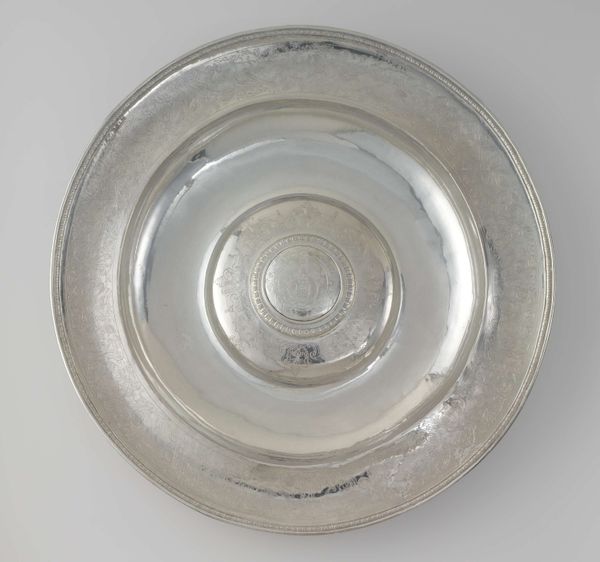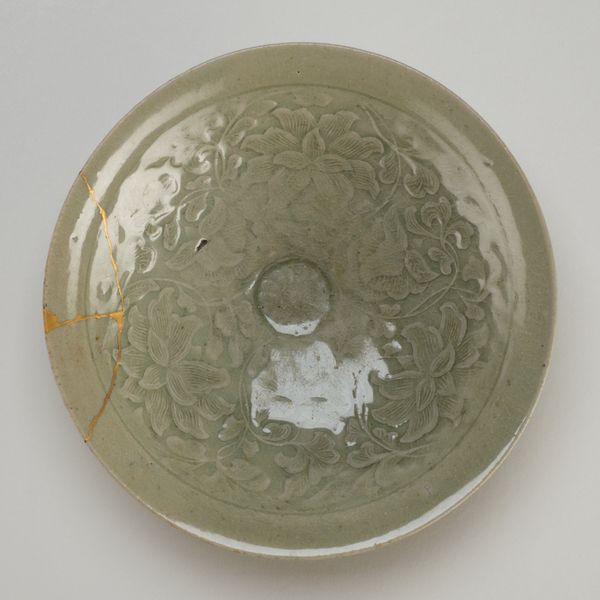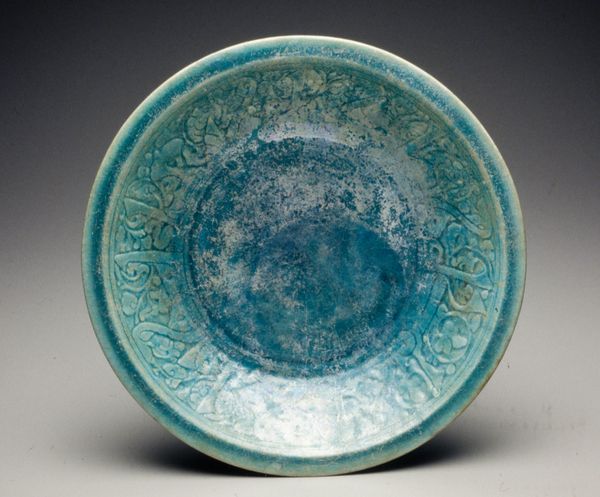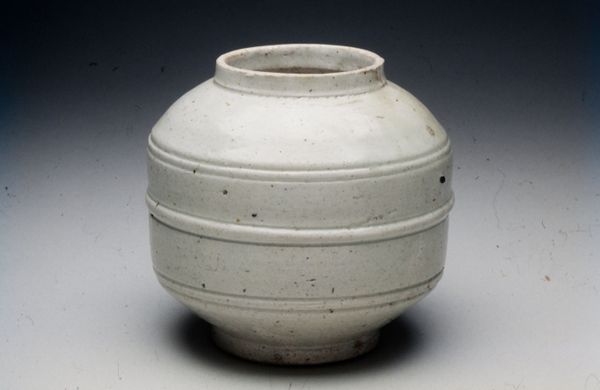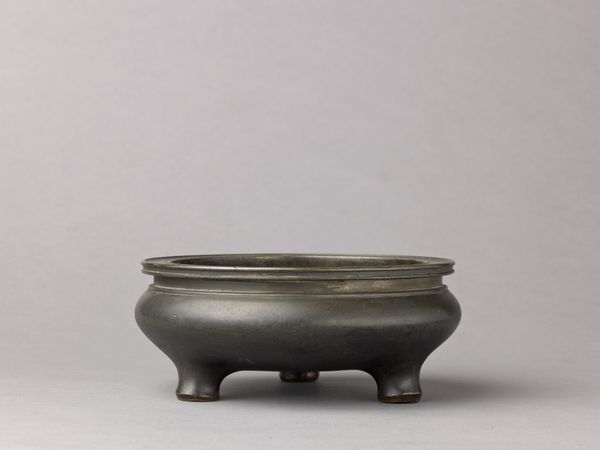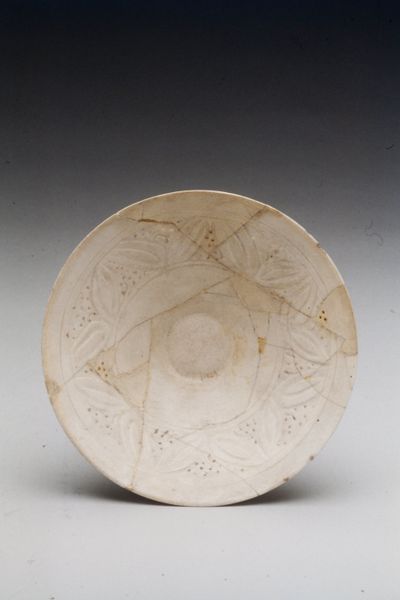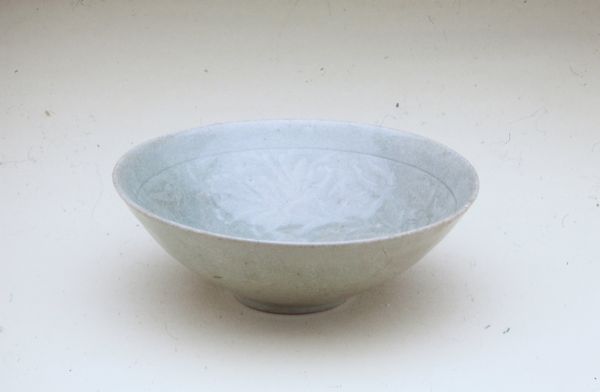
ceramic, earthenware
#
medieval
#
asian-art
#
ceramic
#
earthenware
#
ceramic
#
earthenware
Dimensions: 2 7/8 x 7 5/8 in. (7.3 x 19.37 cm)
Copyright: Public Domain
Curator: Let’s turn our attention to this simple yet intriguing object from the medieval period: a bowl, earthenware with a celadon glaze, dating from the 12th to 13th century. It’s part of the Asian art collection at the Minneapolis Institute of Art. Editor: It has such a serene presence, doesn't it? The cool, subtle green of the glaze is very soothing. What can you tell us about the shape, those floral elements, and the subtle color variations? Curator: Celadon wares, like this bowl, are a crucial part of understanding East Asian trade, status, and the development of ceramic technology during the Song dynasty and beyond. Celadon's green glaze resembled jade, a highly prized stone. Owning such a bowl would speak to both wealth and cultural sophistication. It's a complex marker of class. Editor: The understated floral designs around the rim—almost like gentle breaths of nature etched into the surface—feel very harmonious against the monochrome glaze. The piece as a whole speaks of quiet elegance and refinement. Do the shapes on the bowl also have some significance beyond decoration? Curator: While this specific example might appear simple at first glance, floral motifs are tied to various socio-cultural understandings of status, gendered identity, and philosophical leanings of the era, showing Confucian ideals such as valuing scholarship and cultivating inner virtue, reflecting upon both domestic life and artistic achievement. Editor: Thinking about it, there is such complexity within the limited palette. Considering the technology of the time, the smoothness of the glaze and its uniformity are really remarkable, almost hinting at mass-producibility, yet betraying the human imprint from creation by hand. It suggests a lot about the technological and economic forces at play during this time. Curator: Precisely. These objects provide crucial insights into gender roles, socio-economic status, trade, and belief systems. We shouldn't reduce it to a simple vessel. These seemingly functional things become potent tools when excavating how our predecessors led and organized their everyday lives. Editor: Absolutely. Thinking purely about the design then, even something like a seemingly plain bowl, crafted centuries ago, really is able to prompt us to ponder larger, ongoing themes within cultural and artistic identity and understanding.
Comments
No comments
Be the first to comment and join the conversation on the ultimate creative platform.

